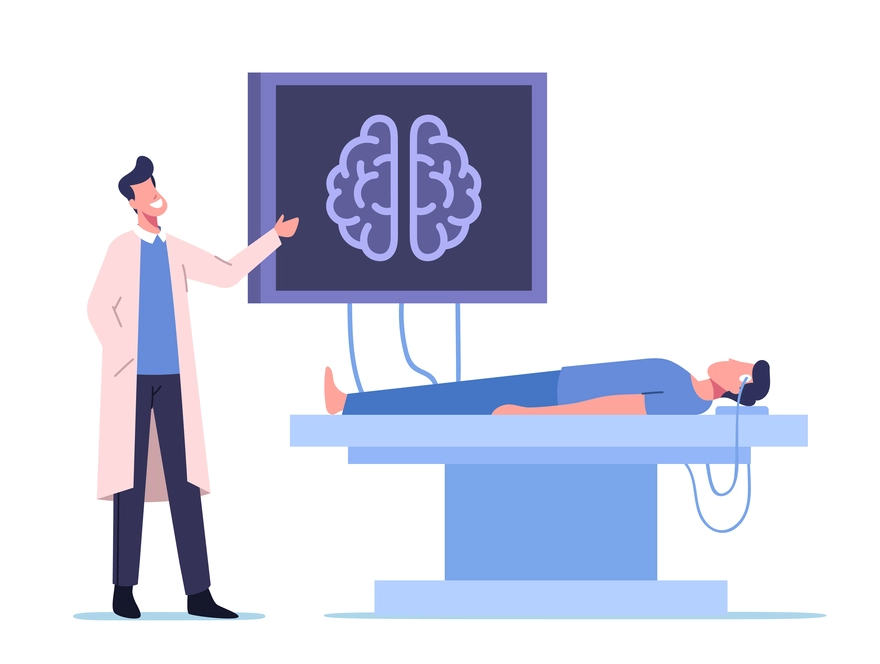Preventive Healthcare
6 Common Types of Eating Disorders and Their Symptoms

Table of Contents
Eating disorders are severe conditions related to persistent eating behaviors that impact a person’s health, emotions, and productivity in principal areas of life. Eating disorders can have serious consequences if not dealt with in time. In reality, mental health, biological health, and environmental factors can cause eating disorders.
There are various types of eating disorders:
- Anorexia nervosa
- Bulimia nervosa
- Binge eating syndrome
- Pica
- Rumination Disorder
- Avoidant/restrictive food intake disorder (ARFID).
Let's take a brief look at each of the eating disorder types.
What is Anorexia Nervosa?
It is a mental disorder that involves a strong fear of becoming too fat. People with this condition often avoid eating food and become extremely thin. People with this condition may also exercise excessively or self-harm to maintain their weight.
This condition can lead to several serious health problems, including heart disease, osteoporosis, and death. It affects men and women equally. There are many signs, but some of the most common are: a decrease in appetite, feeling tired, seeing your body as imperfect, feeling worried about weight gain or weight loss, having low self-esteem, and avoiding social events.
Symptoms of Anorexia Nervosa
The various symptoms of anorexia include:
- Restricted food intake
- Decreased body weight and being skinny
- Exercising excessively leads to dramatic weight loss
- Withdraw from normal social activities because of depression, disgust, shame, or guilt about eating habits
- Constipation
- Mood changes
- Fatigue
- Not wearing tight outfits out of the fear of revealing body shape
- Inconsistent menstrual cycle
- Skipping meals or making excuses for not eating
- Cold intolerance
What is Bulimia Nervosa?
This eating disorder causes a person to eat large quantities of food in a short period of time until the person becomes full beyond normal limits. Those with Bulimia Nervosa also tend to shed extra calories by using laxatives (used for constipation), doing too much exercise, vomiting, and other purging habits like diuretics (removal of excess salt and water from the body). People with bulimia become very good at hiding bulimic behaviours because of shame and guilt.
Symptoms of Bulimia Nervosa
- Binge eating
- Recurrent inappropriate purging (cleansing) habits to prevent weight gain.
- Self-esteem issues and fear of body weight and shape
- Frequent sore throats
- Swollen salivary glands
- Sensitive and decayed teeth due to excessive vomiting
- Severe gastrointestinal problems due to excessive laxative usage
- Vomiting can cause dehydration and electrolyte imbalances (low sodium, potassium, etc.)
What is a Binge Eating Disorder?
As the name suggests, this disease is characterized by eating a large amount of food in a relatively short period and lacking self-control during binges. Binge means a period of overeating. Those with a binge eating disorder do not exercise or make any effort to get in shape.
Symptoms of Binge Eating Disorder
The common symptoms of a binge eating disorder are:
- Eating even when not hungry, often in large amounts and relatively quickly.
- Eating alone, skipping meals to hide from people due to embarrassment, guilt, feeling ashamed, or distress
- One can find empty food wrappers or containers in bedrooms or hiding places
- Because of obesity, many people experience sleep problems, back and joint problems, other comorbidities, tiredness, etc.
What is Pica?
It is an eating disorder that involves eating things that include non-food items and that do not provide any nutritional value. People with pica like to eat non-food substances such as ice, dirt, paper, hair, soil, chalk, soap, cloth, pebbles, detergent, or cornstarch. It can be life-threatening, most frequently seen in individuals with autism, schizophrenia, etc. These kinds of non-food items may contain toxic substances, and eating them can lead to poisoning, which can cause learning and cognitive disabilities in children.
Symptoms of Pica
- Learning and cognitive disabilities
- Nutritional deficiencies
- Constipation or blockages in the gastrointestinal tract. Also, it can cause cuts in the lining of the oesophagus or intestines, which can lead to infection or internal bleeding
- Bacteria or parasites from dirt or other objects can cause serious infections, which can damage the kidneys or liver to a great extent.
What is Rumination Disorder?
It is a disorder in which a person regurgitates (bringing food that has been swallowed into the mouth again) the food that they have previously chewed and swallowed, regurgitates, and re-chews it again, to either swallow or spit it out. This usually occurs within the first 30 minutes after a meal.
Symptoms of Rumination Disorder
- Regurgitation within 10 minutes of eating
- Abdominal pain
- Constant feeling of fullness
- Compromised oral hygiene because of continuous vomiting, and hence, have bad breath
- Weight loss from nutritional deficiencies.
What is Avoidant/Restrictive Food Intake Disorder (ARFID)?
People with this condition experience disturbed eating due to a lack of interest in eating or a distaste for specific smells, tastes, colours, or temperatures. It is very similar to anorexia, but unlike anorexia, people with ARFID are not worried about their body image, shape, or size. Children with ADHD (Attention Deficit Hyperactivity Disorder) are most likely to have this disorder.
Symptoms of ARFID
The most common symptoms are
- Restricted food intake prevents the person from taking enough calories.
- Children have problems eating with others as they feel overly conscious about themselves.
- Weight loss and poor development of the body.
- Nutritional deficiencies are very common.
Identifying these eating disorders at an early stage will help get treatment on time to lead healthier lives. A complete blood count (CBC) or liver, kidney, and thyroid function test can help identify eating disorders. You can rely on Metropolis Healthcare Labs for all blood tests. We have branches across the country. Our state-of-the-art facilities offer accurate results in a short period of time.



































